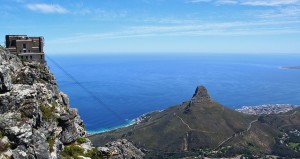The sprawling coastlines of South Africa have long been recognised for their magnificent sights and sounds. Cape Town, South Africa’s capital, remains amongst Africa’s most famed cities. Therein lies a variety of recognisable landmarks, with Table Mountain chief among them. Table Mountain National Park protects the environment surrounding the mountain chain, preserving its land so it may be enjoyed by generations to come. Tunde Folawiyo and others who have travelled South Africa may regard the country amongst Africa’s most vibrant regions.
Table Mountain’s national park was proclaimed in May of 1998 in order to protect the land surrounding the Table Mountain Chain its rare selection of fynbos vegetation. Managed by South Africa’s national parks system, the land has been listed amongst UNESCO’s World Heritage sites. Two well-recognised landmarks include the park’s namesake, Table Mountain, and Cape of Good Hope.
 Table Mountain Park is home to more than 2,000 planet species. Located at the epicenter of Cape Floral Kingdom and deemed an anomaly by botanists, the area contains more plant life than the U.K. as a whole, though urban development and agriculture have caused a significant decline in the unique flora once found within the park.
Table Mountain Park is home to more than 2,000 planet species. Located at the epicenter of Cape Floral Kingdom and deemed an anomaly by botanists, the area contains more plant life than the U.K. as a whole, though urban development and agriculture have caused a significant decline in the unique flora once found within the park.
Currently, the Table Mountain’s surrounding range contains higher concentrations of critical species than any other equivalent area on earth.
Contrary to popular belief, the park’s span is not contiguous. Much of the park’s undeveloped mountainous regions are separated by urban areas. It is divided in three sections. The Table Mountain area covers Lion’s Head, Signal Hill, Devil’s Peak, Orange Kloof and other areas including the lower, rear portion of the mountains called Back Table. This collective area shares borders with Cape Town to the north, as well as Hout Bay to the south. To the west is Camps Bay and Atlantic coast with Southern Suburbs to the east.
The Silvermine-Tokai portion of the park runs from the northwest to the southeast thru the Peninsula. It spans the Atlantic Ocean seaboard to False Bay coast. Covering the areas of Steenberg Peak and Constantiaberg, this section shares borders with Hout bay to the north-west, Kalk Bay to the south-east and Fish Hoek to the South-western area.
The Cape Point area of the park covers the southernmost area of Cape Peninsula. It stretches from the famed Cape Point to Cape of Good Hope to the south. These areas comprise the entirety of Table Mountain Park, providing magnificent sights for revelers visiting South Africa. Tunde Folawiyo and others who have traveled the country may regard the area surrounding the park as some of the most gorgeous in Africa. View Tunde Folawiyo profile on Yolasite for more information of his travels abroad.